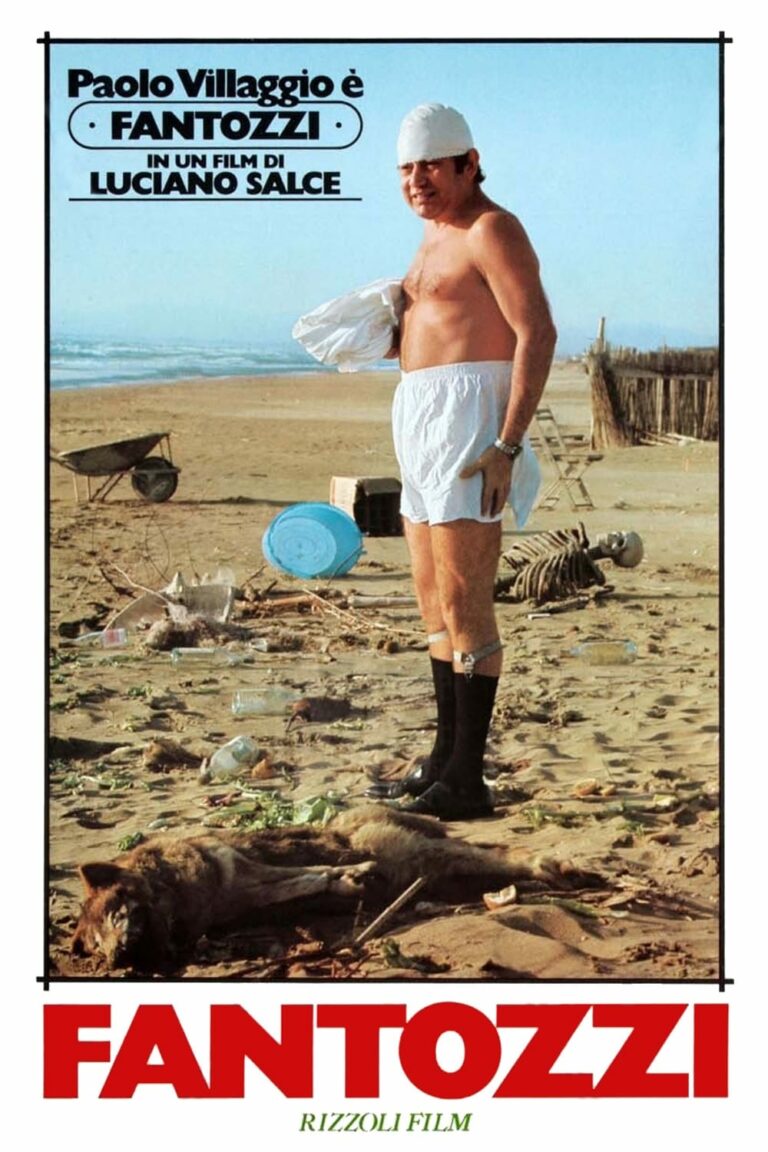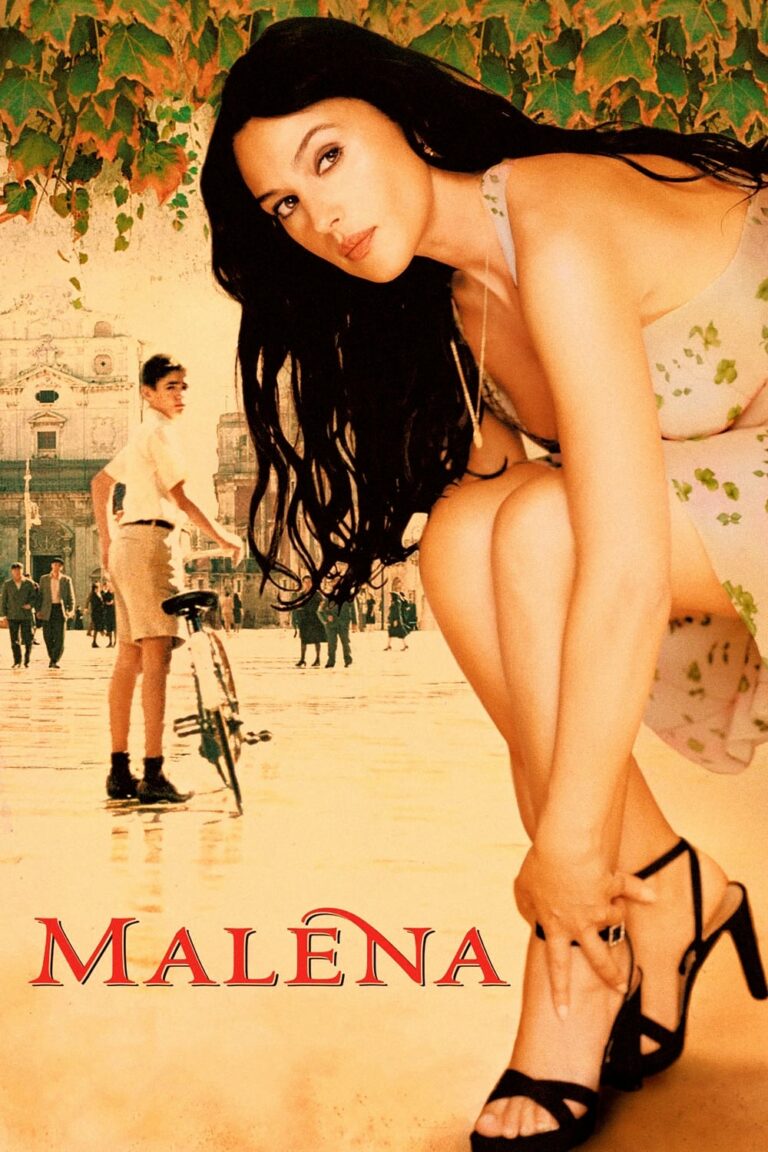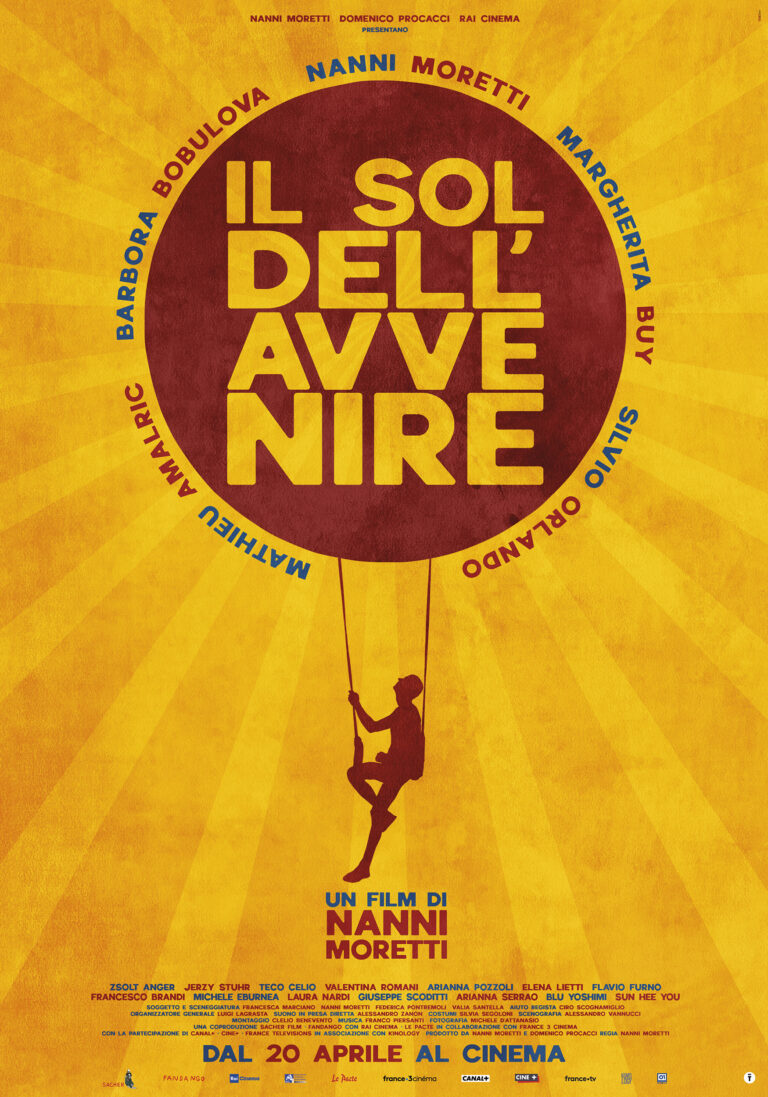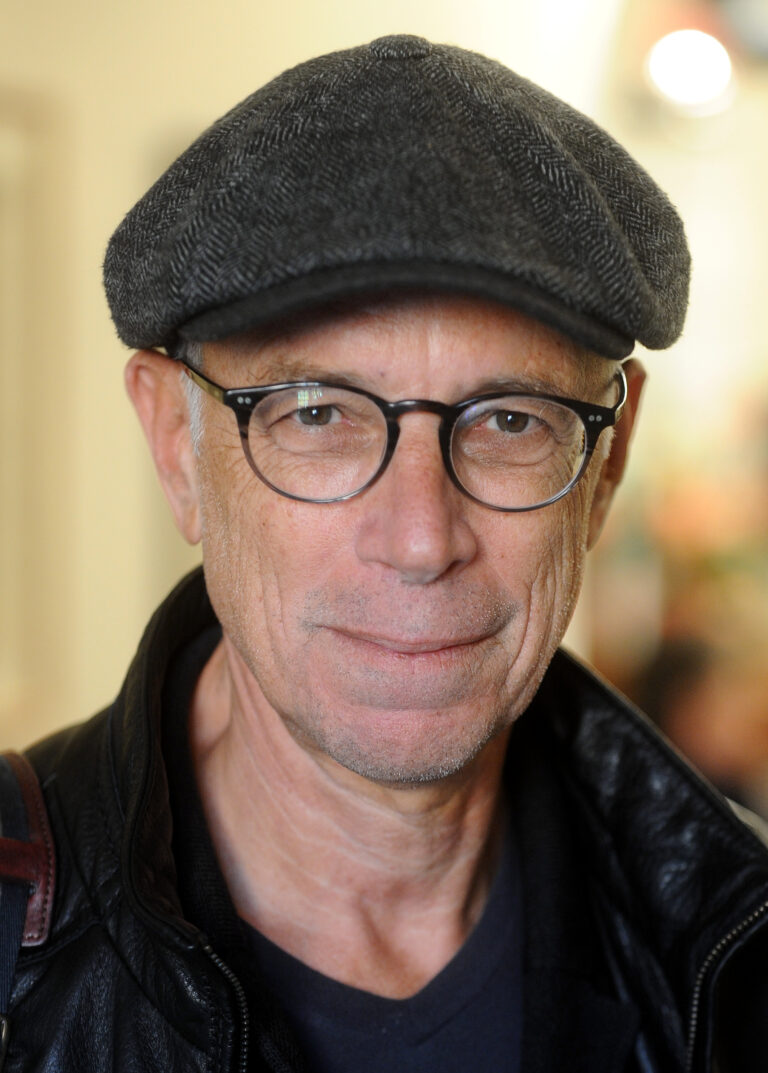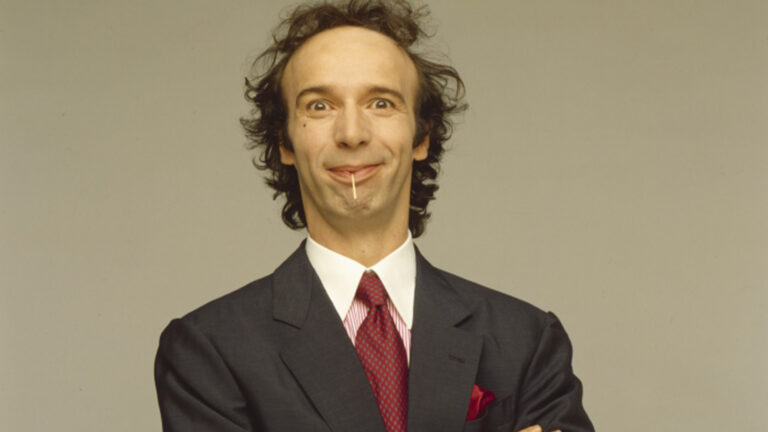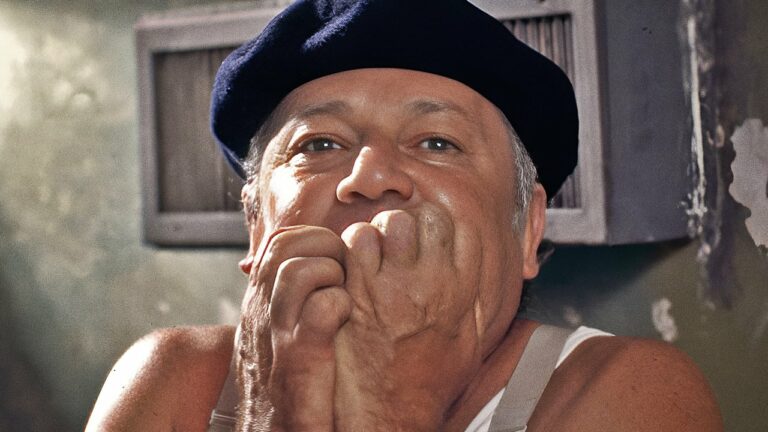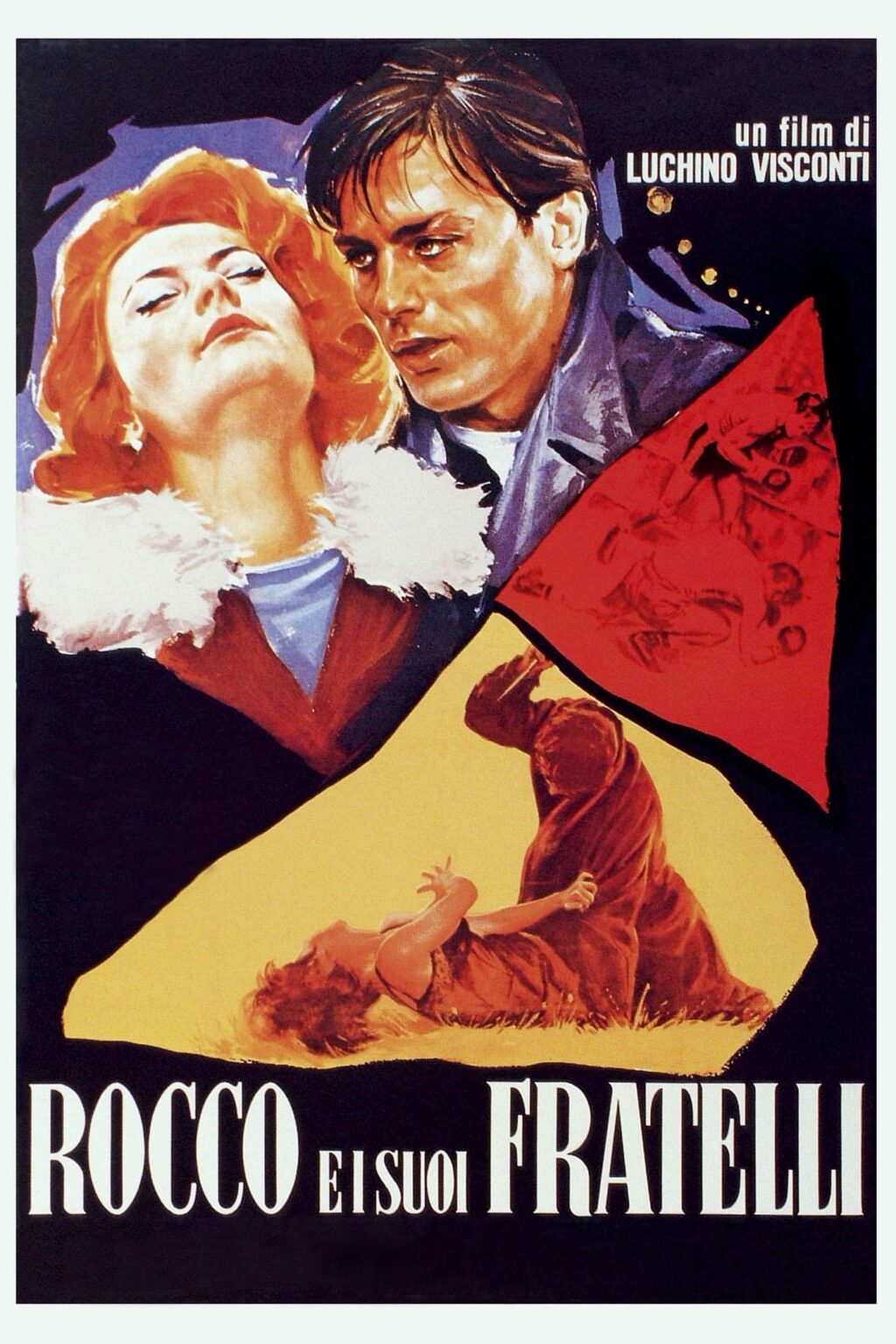
Introduction
Rocco e i Suoi Fratelli (Rocco and His Brothers), released in 1960, stands as one of Luchino Visconti‘s most acclaimed works. This emotionally charged film offers a poignant exploration of family dynamics, love, ambition, and the social changes in post-war Italy. With a stellar cast led by Alain Delon, Renato Salvatori, and Annie Girardot, the film remains a cornerstone of Italian cinema.
In this article, we will explore the film’s plot, its themes, Visconti’s direction, and its cultural significance in Italian cinema history.
Plot Overview: A Family’s Journey Through Struggles and Transformation
The film follows the Parondi family, who move from rural southern Italy to the bustling industrial city of Milan in search of a better life. Widowed mother Rosaria Parondi and her five sons—Vincenzo, Simone, Rocco, Ciro, and Luca—struggle to adjust to the harsh realities of urban life.
Key Plot Points:
- The Move to Milan: The family arrives with hopes of escaping poverty but is soon faced with social alienation and economic hardships.
- Simone’s Rise and Fall: Simone, a talented boxer, initially achieves success but succumbs to arrogance, crime, and moral decay.
- Rocco’s Self-Sacrifice: Rocco, portrayed by Alain Delon, embodies selflessness as he attempts to redeem his brother’s mistakes while sacrificing his happiness.
- A Love Triangle: Both Simone and Rocco fall in love with Nadia (played by Annie Girardot), a tragic figure whose fate becomes central to the unfolding drama.
- The Tragic Climax: Betrayal, violence, and heartbreak culminate in a devastating tragedy that tears the family apart.
Themes Explored in the Film
1. Family and Brotherhood
The film delves into the complex relationships between siblings, highlighting themes of loyalty, jealousy, and sacrifice. Despite Simone’s descent into darkness, Rocco’s unwavering love for his brother underscores the strength of familial bonds.
2. The Clash Between Tradition and Modernity
The Parondi family symbolizes the cultural clash between traditional rural values and the industrialized, impersonal urban landscape of Milan.
3. The Role of Women
Nadia’s character serves as a representation of marginalized women in post-war Italy. Her tragic arc exposes the harsh realities faced by women seeking independence in a male-dominated society.
4. Social Inequality and Moral Decay
The film critiques the economic disparities and moral compromises required to survive in the rapidly modernizing city.
Luchino Visconti’s Vision and Direction
Visconti masterfully blends neorealism with melodrama, creating a visually stunning and emotionally resonant narrative. His attention to detail, use of symbolic imagery, and ability to evoke raw emotions make Rocco e i Suoi Fratelli a cinematic triumph.
Visual and Narrative Style:
- Neorealist Roots: The depiction of working-class struggles and authentic locations reflects Visconti’s neorealist influences.
- Melodramatic Elements: The heightened emotional intensity and tragic storyline elevate the film beyond typical neorealist fare.
- Symbolism: Water imagery is frequently used to represent purification and redemption, particularly in Rocco’s storyline.
The Performances: A Stellar Cast
1. Alain Delon as Rocco
Delon’s portrayal of Rocco is a study in quiet strength and self-sacrifice. His nuanced performance captures the character’s inner turmoil and unwavering loyalty to his family.
2. Renato Salvatori as Simone
Salvatori delivers a powerful performance as the volatile and self-destructive Simone. His descent into madness and violence is both gripping and heartbreaking.
3. Annie Girardot as Nadia
Girardot brings depth and vulnerability to Nadia, transforming her from a hardened prostitute to a tragic victim of love and betrayal.
4. Katina Paxinou as Rosaria
Paxinou’s portrayal of the Parondi matriarch is commanding, embodying the fierce determination and protective nature of a mother.
Cultural and Historical Context
Rocco e i Suoi Fratelli was released during a time when Italy was undergoing rapid social and economic transformation. The migration from rural areas to industrial cities, depicted in the film, was a common phenomenon during the post-war period.
Visconti’s film serves as both a reflection of this societal shift and a critique of the loss of traditional values in the face of modernization.
Critical Reception and Legacy
The film was met with critical acclaim upon its release and has since been regarded as one of the greatest achievements in Italian cinema. It won numerous awards, including the Special Jury Prize at the Venice Film Festival.
Why Rocco e i Suoi Fratelli Endures:
- Timeless Themes: The exploration of family, sacrifice, and moral conflict remains relevant.
- Cinematic Excellence: Visconti’s direction, combined with stellar performances, ensures the film’s enduring appeal.
- Cultural Significance: The film captures a pivotal moment in Italian history, offering valuable insights into the country’s social evolution.
Behind the Scenes: Interesting Facts
- Inspired by Literature: The film was partially inspired by Giovanni Testori’s novel Il Ponte della Ghisolfa.
- Controversial Content: The film’s depiction of violence and sexuality faced censorship challenges upon its release.
- Casting Choices: Alain Delon, a French actor, was cast as Rocco despite initial reservations about his nationality.
- Real Locations: Many scenes were filmed on location in Milan, adding authenticity to the narrative.
FAQs About Rocco e i Suoi Fratelli
1. What is the meaning of the title Rocco e i Suoi Fratelli?
The title translates to Rocco and His Brothers and emphasizes the central theme of familial bonds and struggles.
2. How does the film represent Italian neorealism?
The film incorporates elements of neorealism, such as working-class characters, authentic settings, and social commentary, while blending melodramatic storytelling.
3. What themes does the film explore?
The film explores themes of family loyalty, social inequality, love, betrayal, and the clash between tradition and modernity.
4. Why is Rocco considered a symbolic character?
Rocco represents self-sacrifice, moral purity, and the desire to preserve family unity despite overwhelming challenges.
5. How did the film influence Italian cinema?
Rocco e i Suoi Fratelli set a precedent for blending neorealism with melodrama and inspired future filmmakers with its visual style and narrative complexity.
6. Where can I watch Rocco e i Suoi Fratelli today?
The film is available on various streaming platforms and through specialty distributors of classic cinema.
Conclusion: A Cinematic Triumph Worth Watching
Rocco e i Suoi Fratelli remains a profound exploration of family, sacrifice, and societal transformation. Luchino Visconti’s visionary direction and the unforgettable performances of Alain Delon, Renato Salvatori, and Annie Girardot make it a must-watch for film enthusiasts and anyone interested in the rich tapestry of Italian cinema.
Whether you’re drawn to its emotional depth or its historical significance, Rocco e i Suoi Fratelli is a film that continues to captivate audiences and inspire generations of filmmakers.
